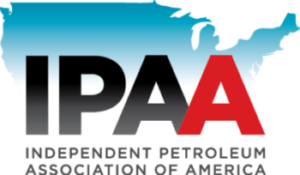Jun 1, 2016 Forget Lost Returns: Transaction Fees Alone Could Cost Divested Institutions Billions of Dollars
New study quantifies for the first time significant transactional and compliance costs divested schools will be forced to bear – ones that have nothing to do with portfolio performance
WASHINGTON, D.C. – Previous studies have definitively shown that divesting one’s portfolio of oil-and-gas related assets weakens investment returns over time, forcing investors to take on more risk as their portfolios become less diversified. But not as much analysis has been done to-date on the other costs that accompany divestment, specifically the “hidden” costs related to conducting the actual transaction and then actively managing the account to keep it compliant with ever-changing definitions of what it means to be “fossil-free.”
Thanks to a groundbreaking new study released this week by Prof. Hendrik Bessembinder, professor of finance at the Arizona State University’s Carey School of Business, we now know that these costs are significant – and in many cases may actually exceed in size the losses that divested institutions would expect to endure from weaker portfolio performance.
According to Bessembinder’s research, transaction and management costs related to divestment – what he refers to in his paper as “frictional costs” – have the potential to rob endowments of as much as 12 percent of their total value over a 20-year timeframe. This includes the immediate transactions costs, as well as ongoing management fees to stay in line with the changing definition of “fossil free.” Prof. Bessembinder estimates these frictional costs could cost a typical large endowment fund growing at a historically reasonable rate as much as $7.4 billion in value over a 20-year period.
“How a divested portfolio performs over time from a returns standpoint is a question we can model, but without a crystal ball, it’s difficult to predict how securities will fare in the future,” said Prof. Bessembinder, who also serves as managing editor of the Journal of Financial and Quantitative Analysis. “But we don’t need a crystal ball to quantify the costs that divested institutions will be forced to bear by merely executing the necessary transactions. These costs have nothing at all to do with the speculative matter of how stocks or industries will do in the future. These are largely unavoidable costs, every institution that divests will incur them, and as my research shows, they significantly add up as time goes on.”
In his paper, Prof. Bessembinder analyzes 30 separate U.S. universities of varying endowment sizes and quantifies what the frictional impact would be on each segment under a divested scenario. Focusing on that sample, including large, medium-sized, and small endowments, conservative estimates of the initial transaction costs range between a loss of 60 basis points and 269 basis points for large endowments; between 25 and 180 basis points for medium endowments; and between nine and 124 basis points for small endowments. Meanwhile, conservative estimates of ongoing annual compliance costs range between 8 basis points and 58 basis points. Combining these estimates of transaction costs with ongoing compliance costs, Bessembinder estimates that endowments would lose between two and 12 percent of their value due to divestment over a 20-year period – over and above any losses incurred due to weakened portfolio performance.
“Activists like to say that ‘past performance isn’t an indicator of future performance’ when they attack independent studies that show divesting from oil-and-gas companies harms returns,” said Jeff Eshelman, senior vice president of the Independent Petroleum Association of America (IPAA), which commissioned the report but had no control or influence over its design or conclusions. “But this study isn’t about modeling the future – it’s about quantifying what the actual, real-world costs are today for simply conducting the transaction, which often requires the wholesale sell-off of mutual funds and the transitioning of accounts over to activist management firms that charge sky-high fees for being ‘fossil-free,’ to the extent we even know what that means anymore.”
As activists continue to pressure institutions to divest their portfolios of oil-and-gas assets, a cottage industry of “green” money management firms has sprung up, with firms such as Trillium Asset Management, Green Century Funds and others openly campaigning alongside activists in support of divestment – notwithstanding the fact that many of these firms themselves continue to own, and have no plans to sell, fossil-related assets.
One of the reasons that transaction and compliance costs related to divestment are so high is that many of these firms charge management fees that are significantly higher than their peers. According to the Bessembinder report, these funds have expense ratios that are on average 10 basis points higher than other active management firms – and as much as 73 basis points higher than passive investment firms.
The Bessembinder report represents the third installment in a series of recent studies that have sought to quantify the true costs of the #DivestmentPenalty. The first study, authored by a former dean of the Univ. of Chicago School of Law, found that divested portfolios would incur an annual loss of 70 basis points over a 50-year period, representing a 23 percent reduction in returns relative to a diversified portfolio. The second report, authored by Prof. Bradford Cornell of Caltech, quantified the impact of divestment on Harvard, Yale, MIT, NYU, and Columbia, with divestment-related losses for those institutions ranging up to $107.8 million per year.
NOTE: Copies of all these reports, along with fact sheets and other collaterals, can be found at DivestmentFacts.com. For a sampling of some of the early coverage of Prof. Bessembinder’s new paper, see articles last week in The New York Times and Boston Globe.
Lots of Universities Agree:
- Williams College: “The initial cost of divestment would be in liquidating the portfolio which, even done in an orderly fashion over the course of a year, would cost $75 million or more… [T]he expected cost to Williams of divestment has nothing to do with projecting whether the particular class of targeted companies are themselves good or bad investments, and is entirely a result of the expected cost of fundamentally changing the college’s strategy for managing the endowment.” LINK
- Middlebury College: “At this time, too many of these questions either raise serious concerns or remain unanswered for the board to support divestment. Given its fiduciary responsibilities, the board cannot look past the lack of proven alternative investment models, the difficulty and material cost of withdrawing from a complex portfolio of investments, and the uncertainties and risks that divestment would create.” LINK
- CUNY College: “The majority of spending derived from the University’s investment pool is utilized for student scholarships. We are concerned that a restructuring of current investments would restrict diversification, lower expected returns, and result in higher transaction costs.” LINK
- American University: “[D]ivesting from these companies would require that AU investments be withdrawn from index funds and commingled funds in favor of more actively managed funds,” and cited the results of an internal study indicating that “this withdrawal would cause manager fees to double.” LINK
- Swarthmore College: “If Swarthmore decided to divest, we would have to find replacements for all the commingled funds because an institution has no power to impose a constraint on a commingled fund…If Swarthmore were to follow this approach, it would forego the 1.7% to 1.8% added return per year. This would amount to lost earnings each and every year…The loss the first year would be $11.2 million, but by five years it would be a cumulative $73.1 million, and by ten years it would be $203.8 million. It would be even greater if all the affected portfolios of the endowment were invested in this way.” LINK
- Bates College: “To guarantee divestment from these 200 public companies, our investment advisers estimate that between a third and a half of the entire endowment would need to be liquidated and replaced with separately managed accounts. Were we to guarantee a fossil fuel free endowment more broadly than the 200 companies, greater than half of the endowment would need to be liquidated. In either scenario, the transition would result in significant transaction costs, a long-term decrease in the endowment’s performance, an increase in the endowment’s risk profile, and thus a loss in annual operating income for the college…In short, divestment would potentially threaten core aspects of the college’s mission.” LINK
Biography of Professor Hendrik Bessembinder
Professor Hendrik Bessembinder is a leading market microstructure and trading expert who currently serves as a professor of finance at the W.P. Carey School of Business of Arizona State University, in addition to holding the honorable title of Francis J. and Mary B. Labriola Endowed Chair. Professor Bessembinder also serves as an Affiliate Professor in Business Economics and Finance at the Foster School of Business of the University of Washington, and a Senior Consultant to Compass Lexecon, an economic research and consulting company. His research focuses on financial markets, including stock, bond, energy, foreign exchange, and non-traditional markets, and has been published in the most prestigious peer reviewed finance journals.
Prior to the University of Arizona, Professor Bessembinder held faculty positions at the University of Rochester, Emory University, and the University of Utah where, from 2006 to 2015, he was a member of the Investment Advisory Committee for the University of Utah Endowment. Professor Bessembinder has published over 35 articles and still serves as the Managing Editor of the Journal of Financial and Quantitative Analysis and Associate Editor of the Journal of Financial Economics and the Journal of Financial Markets. Professor Bessembinder received his PhD from the University in Washington in 1986 and his MBA from Washington State University in 1978 shortly after graduating with a Bachelor’s of Science degree from Utah State University in 1977.
The study, Frictional Costs of Fossil Fuel Divestment, was commissioned and financed by the Independent Petroleum Association of America (IPAA). The views expressed by way of this paper are Professor Bessembinder’s own; he does not speak for Arizona State University, the University of Washington, Compass Lexecon or IPAA. Prof. Bessembinder was assisted in preparing this report by members of Compass Lexecon’s professional staff.
About the Independent Petroleum Association of America
The Independent Petroleum Association of America (IPAA) is a national upstream trade association representing thousands of independent oil and natural gas producers and service companies across the United States. Independent producers develop 90 percent of the nation’s oil and natural gas wells. These companies account for 54 percent of America’s oil production, 85 percent of its natural gas production, and support over 2.1 million American jobs. Learn more about IPAA by visiting www.ipaa.org and following @IPAAaccess on Twitter.








